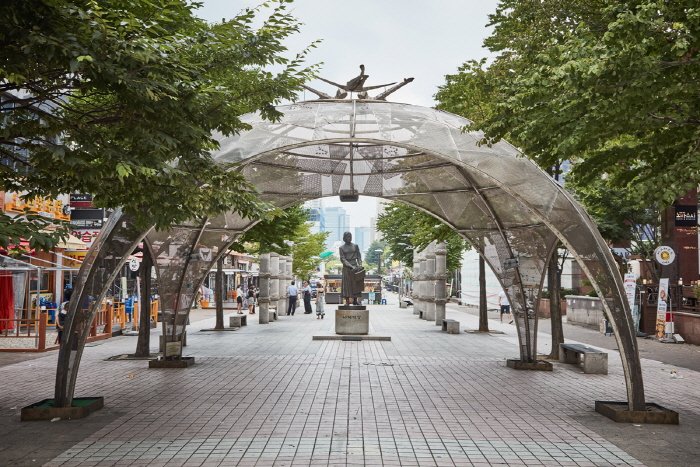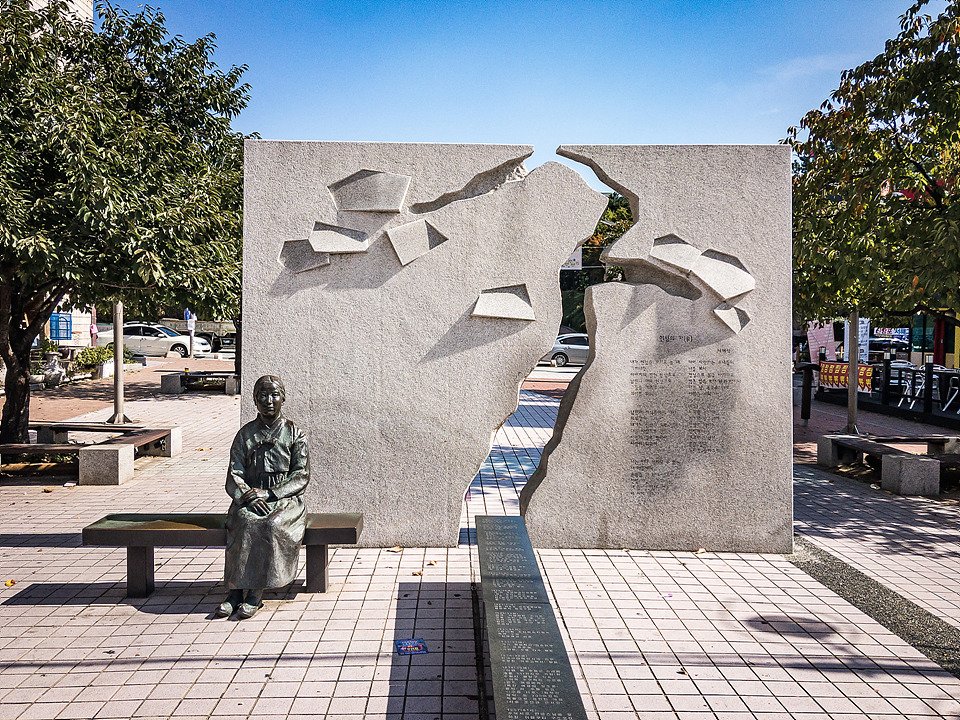Rha-hyeseok’s Street
Editor by Youvin Choi
It’s March 19th, 1921. Over 5,000 people from all over the Korean Peninsula gather to see an art showing. Although this wasn’t an everyday event for Koreans back then and it was the first ever exhibition held by an individual, the reason this event was well-known is because it featured oil paintings, something completely new to Koreans at the time. But what was more of a surprise was that the painter that hosted this exhibition was a female by the name of Rha Hye Seok. Being at the center of the art scene despite being a woman with numerous societal restrictions in the early 20th century Korean society was astonishing to many.
The drawings of Rha Hye Seok are unique. A piece called the ‘Portrait’ is characterized by its depiction of Rha Hye Seok’s distinctive appearances through wild shapes and bold colors. The odd ratio of her facial parts is what also makes the drawing special. However, her paintings haven't always been like this.
Being born from a wealthy family, Rha Hye Seok was given an equal opportunity to education unlike many of the women in that era. As a result, she developed an interest in art, which naturally led to her desire to become an artist. But, like most other families at the time, Rha Hye Seok is also suggested that she marry at a young age – a path that she refuses to take. Instead, she leaves for one of Japan’s best art universities to study more about the Western art, which made her the first female student to ever study Western art abroad. Here, Rha Hye Seok was able to receive the professional education that she had been looking for, learning more about the ingredients and painting techniques of Western art.
After coming back to Chosun from her years of study, she engages in a new type of art, woodcut printmaking, which she uses to portray a lot of what society looked like in her days. This was when Rha Hye Seok started printing woodcut artworks related to the lives of women, later going on to make one of her most famous carvings <What is that>. This piece reflects on how the men negatively perceived the New Woman to be at the time through the use of simple and soft lines. Moreover, Rha Hye Seok went on to write short poems, novels and publish her works through articles, which led to her receiving more attention from the public. She also involved herself with societal movements as well.
As many educated people did at the time, Rha Hye Seok was also very passionate about the independence movement in Korea. One time, she was actually arrested and sentenced to five months in jail for being a part of the 3.1 Movement.
Meanwhile, as a result of her family’s continued offer, Rha Hye Seok agrees to marry Kim Ho Young under the promise that he will always love her and let her continue drawing without any intervention. However, Rha Hye Seok was living a different life now, which led to a change in her style of painting. She now began to draw objects and still life, where she would accurately depict the subject in a realistic way instead of the contemporary way of drawing lights and colors. This made her artworks stand out. With her continuously publishing her work, her unique drawings were widely known to people in the art scene. One event that really got her name out was when she hosted her own exhibition with around 70 pieces of oil painting, as mentioned above. With it being all over the media as well, the event was a big success, with approximately a third of the paintings sold.
Rha Hye Seok went on to draw more paintings about nature and scenery. One representative work in this period would be the <Manchurian Bongcheon Landscape>. The detailed drawing of a traditional Chinese structure in the background, as well as the audacious placement of the subject, shows that Rha Hye Seok has perfected her own style. The strong and thick use of the brush also reminds us of impressionism, which shows us of her efforts to keep up with Western art.
However, it was physically challenging for Rha Hye Seok to manage both her professional work and household role. It was then that her diplomat husband suggested that they travel around the world. Thinking that this would help regain inspiration, Rha Hye Seok left for a 16 month trip across the globe, which indeed did assist her in her later works. Europe – especially Paris – had the biggest influence on Rha Hye Seok, as it was the hub of Western art with legendary painters like Picasso and Matisse. On her trip to France, she decided that she wanted to learn more about favism, a type of drawing that uses bold colors and wild shapes, from Bissiere. The effect that this period had on her art could be observed by the more adventurous drawings she painted later on like the <Dancer>, as she realized European painters are more reckless when it comes to what they draw. The style also undergoes change, as she combines her own unique style with other methods that were popular at the time. This is clearly seen in her portraits, as she messes with the proportion of the faces to fully express her unique perception of people. She also learns that exaggeration and omission are essential in showing her thoughts and feelings.
This time of happiness quickly fades away. Rha Hye Seok is accused of cheating on her current husband with another diplomat he met during her travels. This ultimately leads to divorce, and the relatively conservative Korean community in France condemns her for such behavior. She then goes on to publish her honest opinions and thoughts on what had happened in a book called the <Divorce Confession>. However, all that was waiting for her was criticism and mockery, saying that she was a menace to the traditional values of society.
Nonetheless, Rha Hye Seok refused to give up on her work. Based on what she’s learned, she continued to draw and write about her beliefs, including those regarding gender equality. Despite her attempts, Rha Hye Seok was still frowned upon for her wrongdoings and suffers from the disapproval of the art community and the media. During this time, Choi Lin, the second man Rha Hye Seok loved, also leaves her, putting her in a worse place than ever. The public’s attention also faded, along with it came economic distress and sickness. She had mental issues, as well as problems with her hand, which made it extremely difficult for her to step out into the spotlight ever again. Then, in 1948, a small newspaper published that she had passed away due to an illness. The life of an artist with such a decorated career died without even the smallest recognition.




